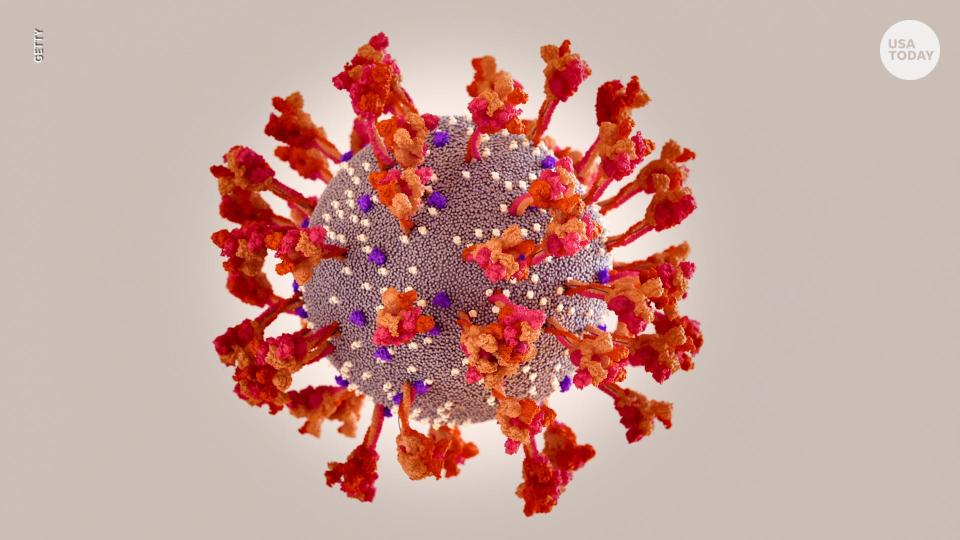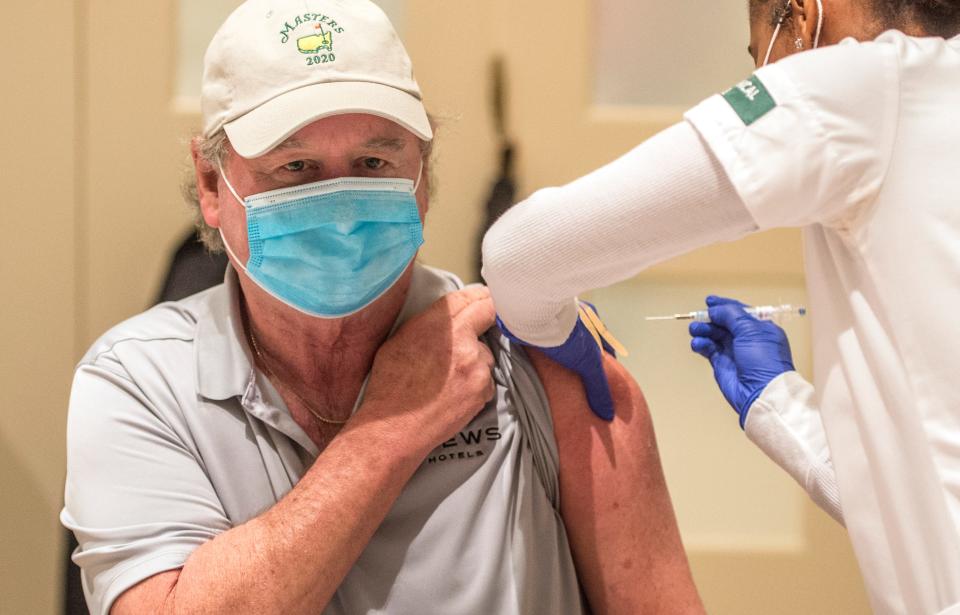New COVID-19 strain is here, new boosters coming soon. Here's what Georgians should know
- Oops!Something went wrong.Please try again later.
Though COVID-19 is no longer considered a global health emergency and the past year has seen a drop off in new cases and COVID-related deaths, the disease has not disappeared and continues to mutate.
A new subvariant colloquially called "Eris," sprouted up over the summer and is the dominant strain across the southeast, according to the Centers for Disease Control and Prevention. That's on top of another, even newer strain colloquially called "Pirola." Here's a closer look at the virus' new forms, how much they have impacted Georgia, and what residents need to know to protect themselves to mitigate the spread:
Is COVID-19 getting worse in Georgia?
Georgia Department of Public Health's COVID-19 status report indicates more than 16,000 new cases have been reported during the past month. There has been a gradual increase since July, though it's not yet the sharp uptick seen this time last year or in previous years.
COVID-related deaths in Georgia have been in the single digits per day since April.
Georgia fall foliage map 2023: When to see peak leaf color
Environmental development: Air quality construction permit approved for Savannah River Plutonium Processing facility
Are the new variants of COVID in Georgia?

Eris, also known as EG.5, makes up 16.4% of cases, according to the CDC. It's been the most common variant in the southeast for weeks. On Aug. 16, GDPH spokesperson Nancy Nydam reported that Georgia's Eris percentage was in line with the rest of the region at the time.
Pirola, officially called BA.2.86, has been spotted only a few times in the United States, but it has already made the World Health Organization's list of "variants of concern." It has not been reported in Georgia, according to GISAID, a genome sequencing database. As of Thursday, Pirola has been reported in six U.S. states: Washington, Texas, Ohio, Michigan, Pennsylvania and Virginia.
How dangerous are the new COVID strains?
As with most cases, patients with these new coronavirus strains are likely to experience cold-like symptoms.
In its Aug. 9 risk evaluation, WHO reported, based on the evidence at the time, that while Eris' prevalence is rising, the public health risk is low at the global level. There have been no changes to disease severity, but Eris has displayed growth advantage and immune escape properties. This increases the virus' transmission capabilities and could make it more widespread.
Three studies were published this week on Pirola indicating it may not as dangerous as other strains, though they have not been peer reviewed yet. The first showed that it doesn't penetrate cells very well, suggesting it's not as infectious. The second showed it doesn't evade the immune system as much as others. The third showed it's not good at avoiding immune protections.
Are new COVID boosters coming?

The latest boosters are expected to become available in the U.S. almost immediately after a CDC advisory committee meeting on Tuesday that will recommend how they should be used. Pfizer and Moderna have both released data indicating they provide protection from Eris.
This week's studies indicate Pirola is not likely to undermine the vaccine's preventative measures.
While an individual is considered fully vaccinated after the first two doses, boosters provide extra protection, especially for older and more vulnerable populations.
Where in Georgia are free COVID-19 tests available?
Walgreens provides PCR home kits that are funded by the federal government. Samples are self-collected and shipped to a lab where they will be processed and provide results within one-to-two days. Walgreens offers other COVID tests that may be covered by insurance depending on the policy.
Free testing locations can also be found at testinglocator.cdc.gov. However, those interested should call the location ahead of time for more information.
'I love UGA to the fullest:' Quavo plans to enroll at University of Georgia
Tropical Depression: 'Powerful hurricane' likely as Tropical Depression 13 heads to Caribbean. Here's what to know for Coastal Georgia
Where in Georgia are free COVID-19 vaccinations and boosters available?
Anyone ages 5 and older is eligible to both of the initial doses of the COVID vaccination. Those who are moderately to severely immunocompromised may be eligible for an additional dose. A reformulated booster providing extra protection against the Omicron strain became available in September 2022.
All of these inoculations are provided at no cost, regardless of insurance. They also continue to be provided at most chain pharmacies (CVS, Walmart, Walgreens, etc.) and at Georgia Department of Public Health facilities.
To find more providers, go to vaccines.gov.
USA TODAY Network reporters contributed to this story.
This article originally appeared on Augusta Chronicle: COVID in Georgia update: Pirola variant details, new vaccine boosters

